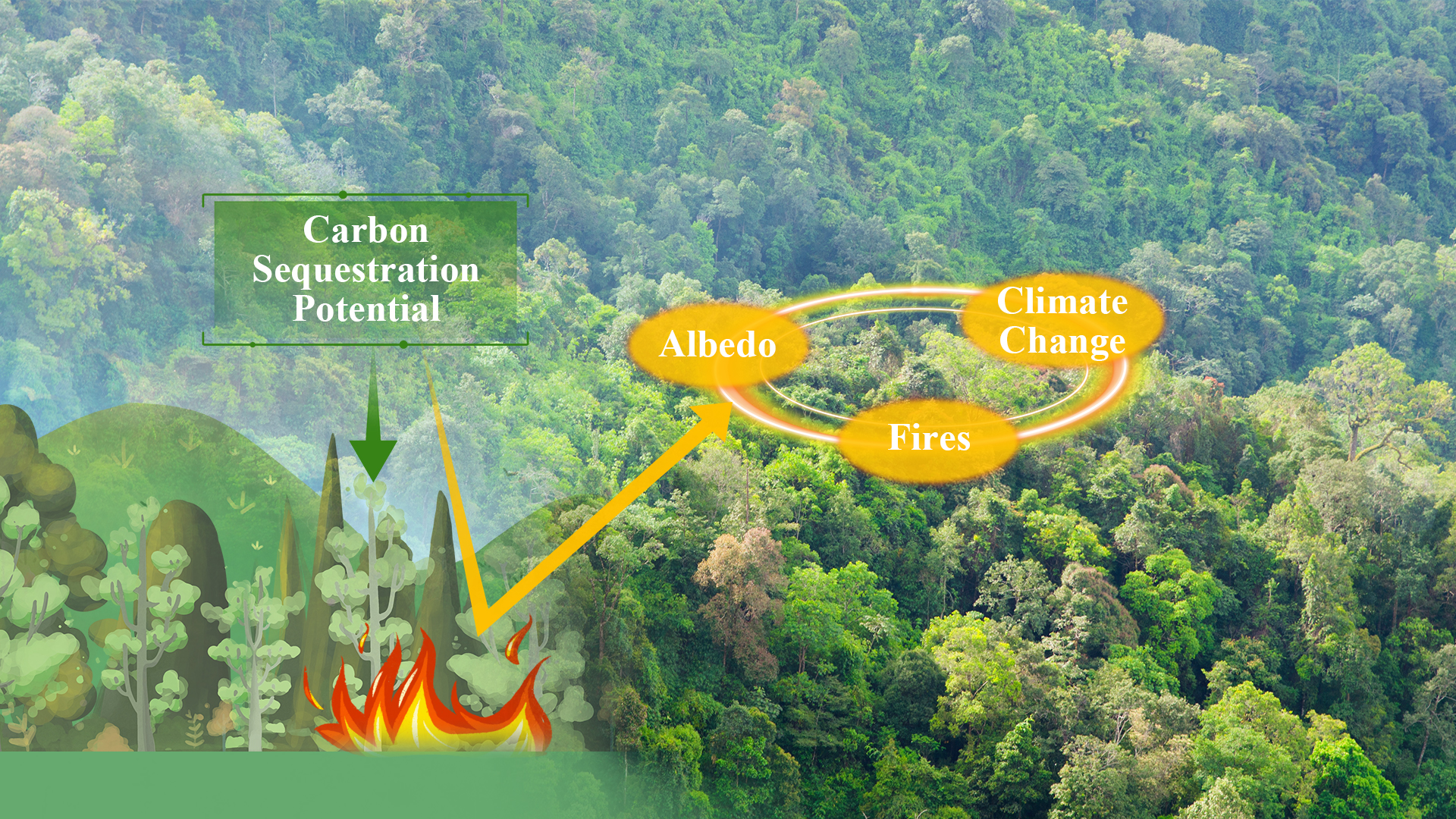Afforestation and reforestation (hereafter referred to as forestation) are widely recognized as a crucial strategy for meeting the climate targets set by the Paris Agreement. The Intergovernmental Panel on Climate Change (IPCC) of the United Nations has estimated that global forestation could sequester up to 68.7 petagrams of carbon (approximately 68.7 billion metric tons) by 2100, representing 8% of the cumulative net carbon emissions from pre-industrial times to 2100 under a sustainable pathway. However, this potential could be significantly diminished by factors such as climate change-driven wildfires, reduced ecosystem resilience, and shifts in surface albedo.

An emerging study led by Professor Zhenzhong Zeng’s research group from the School of Environmental Science and Engineering at the Southern University of Science and Technology (SUSTech) has quantified the global carbon mitigation potential of forestation under future climate scenarios, highlighting the critical need to balance carbon sequestration with wildfire impacts and surface albedo dynamics. Their work combines Earth system modeling with socioeconomic pathways to map optimal forestation outcomes, offering a roadmap for maximizing climate benefits.
Their paper, titled “Climate mitigation potential for targeted forestation after considering climate change, fires, and albedo”, has been published in Science Advances, an interdisciplinary journal under the American Association for the Advancement of Science (AAAS), focusing on publishing cutting-edge scientific research with global impact.
The researchers estimated that globally, targeted forestation could sequester 31.3 to 69.2 petagrams of carbon equivalent (Pg Ceq) by 2100 under sustainable development pathways. However, this potential varies dramatically across regions due to climate vulnerabilities. Tropical and subtropical nations emerge as key players: Brazil (3.5–8.6 Pg Ceq), China (1.1–6.7 Pg Ceq), and Australia (2.9–5.8 Pg Ceq) lead in projected carbon gains, followed by Southeast Asian countries and Congo Basin nations. Mid-to-high-latitude regions like the U.S. and Russia show more modest but still viable potential.
Crucially, their findings identify counterproductive effects in poorly planned initiatives. For instance, forest expansion in snow-dominated boreal zones could reduce surface albedo, partially offsetting carbon benefits through increased solar absorption. Additionally, climate-driven wildfires threaten to diminish considerable forestation efforts from carbon sinks to sources.
“Forestation is not a one-size-fits-all solution”, explains Professor Zeng. “A hectare of tropical forest can generate more fruitful carbon mitigation outcomes than a poorly planned hectare of plantation in other regions over the same period, while facing lower fire risks and albedo countereffect”.
The team calls for a paradigm shift in global forestation policies. As the research team notes, “Current national pledges focus on area-based targets, but strategic site selection could enhance carbon outcomes with nearly half of the required lands”. The study proposes integrating real-time climate projections, fire monitoring models, and albedo analytics into decision-making frameworks.
Graduated student Shijing Liang from the School of Environmental Science and Engineering (now a joint Ph.D. student at Eastern Institute of Technology, Ningbo and The Hong Kong Polytechnic University) is the first author of the paper. Professor Zhenzhong Zeng and Research Assistant Professor Dashan Wang are the corresponding authors. Other collaborators include Professor Alan D. Ziegler from Maejo University, Professors Peter B. Reich and Kai Zhu from the University of Michigan, Professor Philippe Ciais from the Laboratoire des Sciences du Climat et de l’Environnement, and Professor Deliang Chen from Tsinghua University and the University of Gothenburg. SUSTech is the primary affiliation of the paper.
Paper link: https://doi.org/10.1126/sciadv.adn7915
To read all stories about SUSTech science, subscribe to the monthly SUSTech Newsletter.
Proofread ByAdrian Cremin, Yilin ZHOU
Photo BySchool of Environmental Science and Engineering